An electromagnetic flow meter is a device used to estimate the flow rate of electrically conductive liquids. It works by measuring the voltage generated by the movement of a fluid through a magnetic field. Electromagnetic flow meters are used in various industries, including the textile industry, where they can provide numerous benefits.
The textile industry is a large and diverse sector that includes everything from clothing and apparel to home furnishings and industrial textiles. Therefore, ensuring the proper flow and measurement of liquids, such as water, dyes, and chemicals, is crucial for the production and quality control of textile products. This is where an electromagnetic flow meter can be invaluable.
In this article, we’ll go more deeply into the operation of electromagnetic flow meters and examine their potential advantages for the textile sector. We will also provide examples of applications of electromagnetic flow meters in the textile industry, highlighting their positive impact on efficiency, quality control, and more.
Overview of the textile industry
The textile industry is a vast and multifaceted sector encompassing the production, processing, and distribution of textiles and textile-based products. Textiles are materials made from fibers, yarns, or fabrics. They are used in many products, including clothing, bedding, towels, carpets, and industrial products such as conveyor belts and tire cords.
Electromagnetic flow meters are an essential tool in the textile industry, as they provide an accurate and reliable way to measure the flow of electrically conductive liquids. These devices work by measuring the voltage generated by the movement of a fluid through a magnetic field, making them non-invasive and ideal for use in processes where contamination is a concern. Electromagnetic flow meters can measure a wide range of textiles, including fibers, yarns, and fabrics.
The textile industry involves several processes that require the use of liquids, such as water, dyes, and auxiliaries. Therefore, proper measurement and control of these liquids are crucial for ensuring the quality and consistency of textile products. Electromagnetic flow meters can help with this by providing highly accurate measurements, even when the measured liquid has a high solids content or is viscous.
In addition to their accuracy and reliability, electromagnetic flow meters have the added benefit of measuring liquids in real-time, allowing textile producers to adjust their processes as needed. This can increase efficiency and reduce waste, ultimately leading to cost savings for the company.
Altogether, using electromagnetic flow meters in the textile industry can improve quality control, increase efficiency, and reduce costs. As a result, these devices are an invaluable tool for textile producers looking to optimize their processes and produce high-quality products.
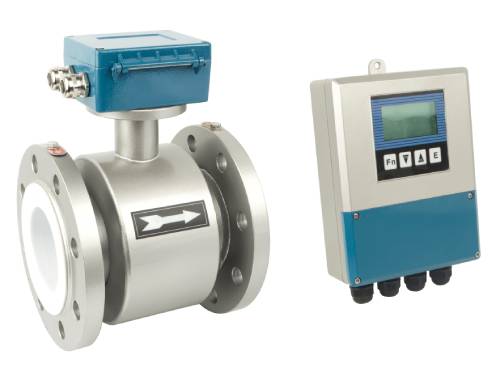
How an electromagnetic flow meter works
Have you ever wondered how an electromagnetic flow meter works?
These sophisticated devices are used to measure the flow rate of electrically conductive liquids, and they offer numerous benefits over traditional flow measurement methods.
So, how does it work?
An electromagnetic flow meter consists of two main components: a sensor and a transmitter. These components work together to measure the flow rate of electrically conductive liquids, using electromagnetic principles to provide accurate and reliable measurements.
The sensor of an electromagnetic flow meter is installed in the pipe or vessel where the liquid flows. It consists of two electrodes and an insulating liner. Upon the application of an electrical current to the electrodes, a magnetic field is created around the electrodes. As the liquid flows through the sensor, it generates a voltage proportional to its flow rate. This voltage is then measured by the transmitter, which converts it into a flow rate measurement.
The transmitter is responsible for taking the voltage measurement from the sensor and converting it into a flow rate measurement. It typically includes a display or output for displaying the flow rate and controls for calibrating and configuring the flow meter. In addition, the transmitter may include additional features such as alarms or data logging capabilities.
The sensor and transmitter of an electromagnetic flow meter work together to provide accurate and reliable flow rate measurements, using electromagnetic principles to measure the flow of electrically conductive liquids. Therefore, these components are integral to any electromagnetic flow meter system.
One of the critical advantages of electromagnetic flow meters is their ability to measure a wide range of liquids, including highly viscous or containing a high solids content. This is because they assess the flow using electromagnetic principles as opposed to mechanical components, which the properties of the liquid might impact.
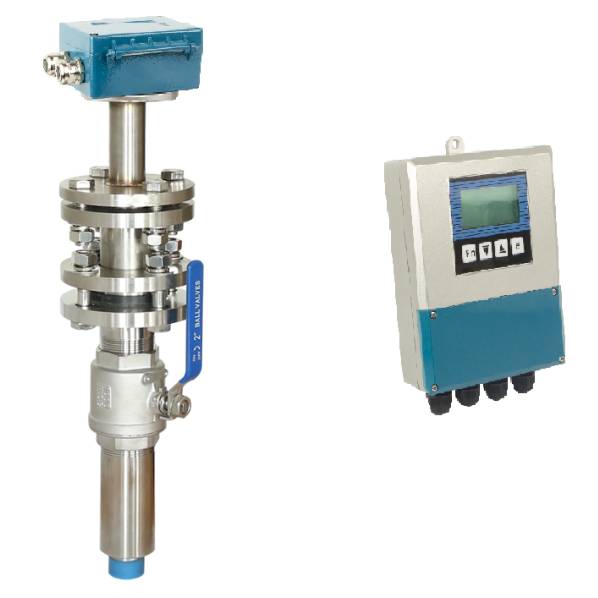
In addition to their accuracy and versatility, electromagnetic flow meters are also non-invasive, meaning they do not physically alter the flow of the liquid. This makes them ideal for use in processes where contamination is a concern, such as in the food and beverage industry or pharmaceutical manufacturing.
Generally, electromagnetic flow meters are a reliable and effective way to measure the flow of electrically conductive liquids. Whether you’re in the process industry, water and wastewater treatment, or any other sector where flow measurement is essential, an electromagnetic flow meter is an invaluable tool.
Benefits of using an electromagnetic flow meter in the textile industry
If you’re in the textile industry, you know how important it is to measure and control the flow of liquids used in production. That’s where electromagnetic flow meters come in! These advanced devices offer a range of benefits that can help you optimize your processes, improve quality control, and reduce costs. Here are just a few of the critical benefits of using an electromagnetic flow meter in the textile industry:
Increased accuracy and reliability: Electromagnetic flow meters are known for their high accuracy and reliability, even when measuring liquids with high solids or viscosity. This is crucial for ensuring the consistency and quality of your textile products.
Non-invasive measurement: No need to worry about contamination with electromagnetic flow meters! These devices are non-invasive, meaning they don’t physically alter the flow of the measured liquid. Ensuring the excellence of your final products is dependent on this.
Ability to measure various types of textiles: Whether you’re working with fibers, yarns, or fabrics, electromagnetic flow meters can handle it all. These versatile devices can measure the flow of liquids used in various stages of the textile production process.
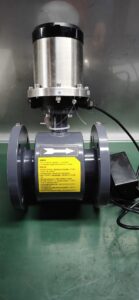
Real-time measurement: One of the best things about electromagnetic flow meters is that they measure liquids in real time. This means you can adjust your processes as needed, increasing efficiency and reducing waste.
Easy installation and maintenance: These devices are relatively easy to install and maintain, requiring minimal downtime for repairs or maintenance. This is a significant plus in the fast-paced world of the textile industry!
All in all, electromagnetic flow meters are a priceless tool for the textile industry. These devices can help you optimize your processes, improve quality control, and reduce costs by accurately measuring and controlling the flow of liquids. Consider using electromagnetic flow meters to take your textile business to the next level.
Applications of the electromagnetic flow meter in the Textile industry
Did you know that electromagnetic flow meters are a game-changer in the textile industry? These advanced devices can help you optimize your processes, reduce waste, and improve quality control. Here are a few instances where they might be utilized:
Dyeing process: Imagine accurately measuring the flow of dye and water in your dyeing process. With an electromagnetic flow meter, you can do just that! These devices can help you optimize your process and reduce waste, leading to cost savings and improved profitability.
Chemical processing: Whether spinning, weaving, or finishing, accurate flow measurement is key to maintaining quality control in your chemical processing. Electromagnetic flow meters can help you do just that, measuring the flow of chemicals used in various stages of the textile production process.
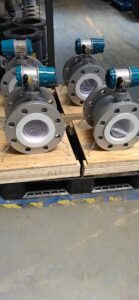
Water treatment: In the textile industry, water is often used as a solvent or carrier for various chemicals and dyes. Using an electromagnetic flow meter to measure the flow of water in your treatment systems, you can ensure that the water meets the required standards and is adequately treated before discharge.
Wastewater treatment: These devices are also useful for measuring wastewater flow in the textile industry. With an electromagnetic flow meter, you can ensure that your wastewater is properly treated before being released into the environment, helping you to meet regulatory standards and protect the environment.
Overall, electromagnetic flow meters are an invaluable tool for the textile industry. By accurately measuring the flow of liquids, these devices can help you improve efficiency, reduce waste, and enhance quality control, ultimately leading to cost savings and improved profitability. So why wait? Start using electromagnetic flow meters today and take your textile business to the next level!
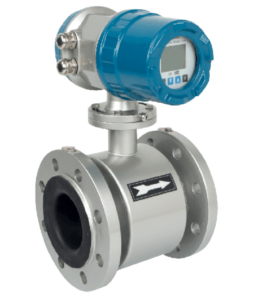
Conclusion
In conclusion, electromagnetic flow meters are an essential tool in the textile industry, offering a range of benefits for measuring and controlling the flow of liquids used in textile production. These devices are highly accurate and reliable and can measure various textiles, including fibers, yarns, and fabrics. They also offer real-time measurement, making them useful for optimizing processes and reducing waste. In addition, electromagnetic flow meters are non-invasive, making them ideal for use in processes where contamination is a concern.
As the textile industry continues to evolve, electromagnetic flow meters will likely play an increasingly important role in measuring and controlling the flow of liquids used in textile production. These advanced devices offer numerous benefits, including increased accuracy and reliability, non-invasive measurement, and the ability to measure a wide range of textiles. In addition, electromagnetic flow meters offer real-time measurement, making them an invaluable tool for optimizing processes and reducing waste.
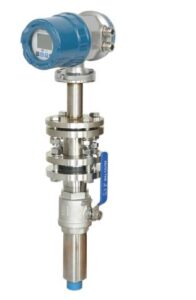
In the future, we expect to see the continued development of electromagnetic flow meter technology, with innovations and advancements emerging to improve accuracy, reliability, and ease of use. As the benefits of these devices become more widely recognized, adoption is likely to increase, with electromagnetic flow meters being integrated into new processes and applications and expanding their use in existing processes.
However, companies need to stay abreast of changes in regulations related to environmental protection, health and safety, and other areas that may impact the use of electromagnetic flow meters in the textile industry. Additionally, as demand for these devices rises, suppliers’ and manufacturers’ competitiveness is likely to intensify. This will result in price competition and the creation of new goods and services to fulfill the demands of textile makers.
Overall, the future of using electromagnetic flow meters in the textile industry looks bright. These devices continue to offer numerous benefits for measuring and controlling liquids used in textile production. Furthermore, by staying up-to-date on the latest developments and ensuring compliance with relevant regulations, textile producers can use these advanced tools to optimize their processes and produce high-quality products.
